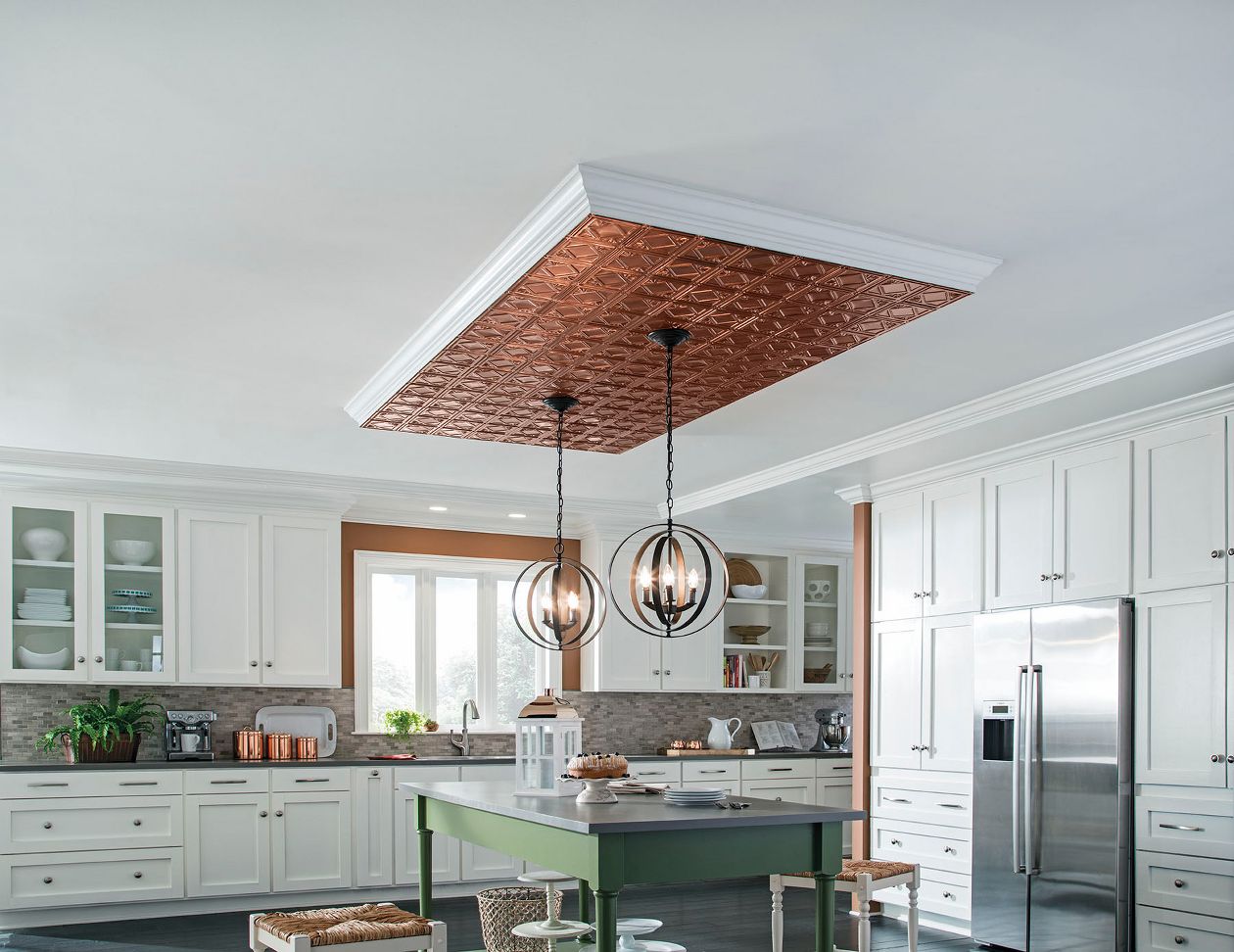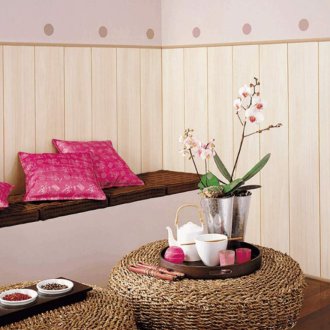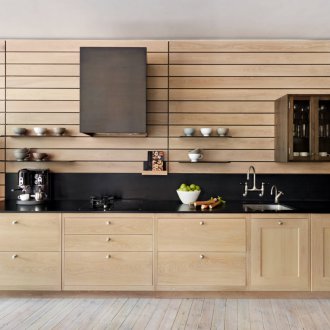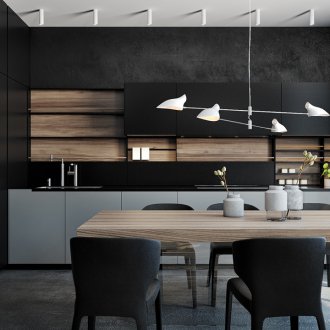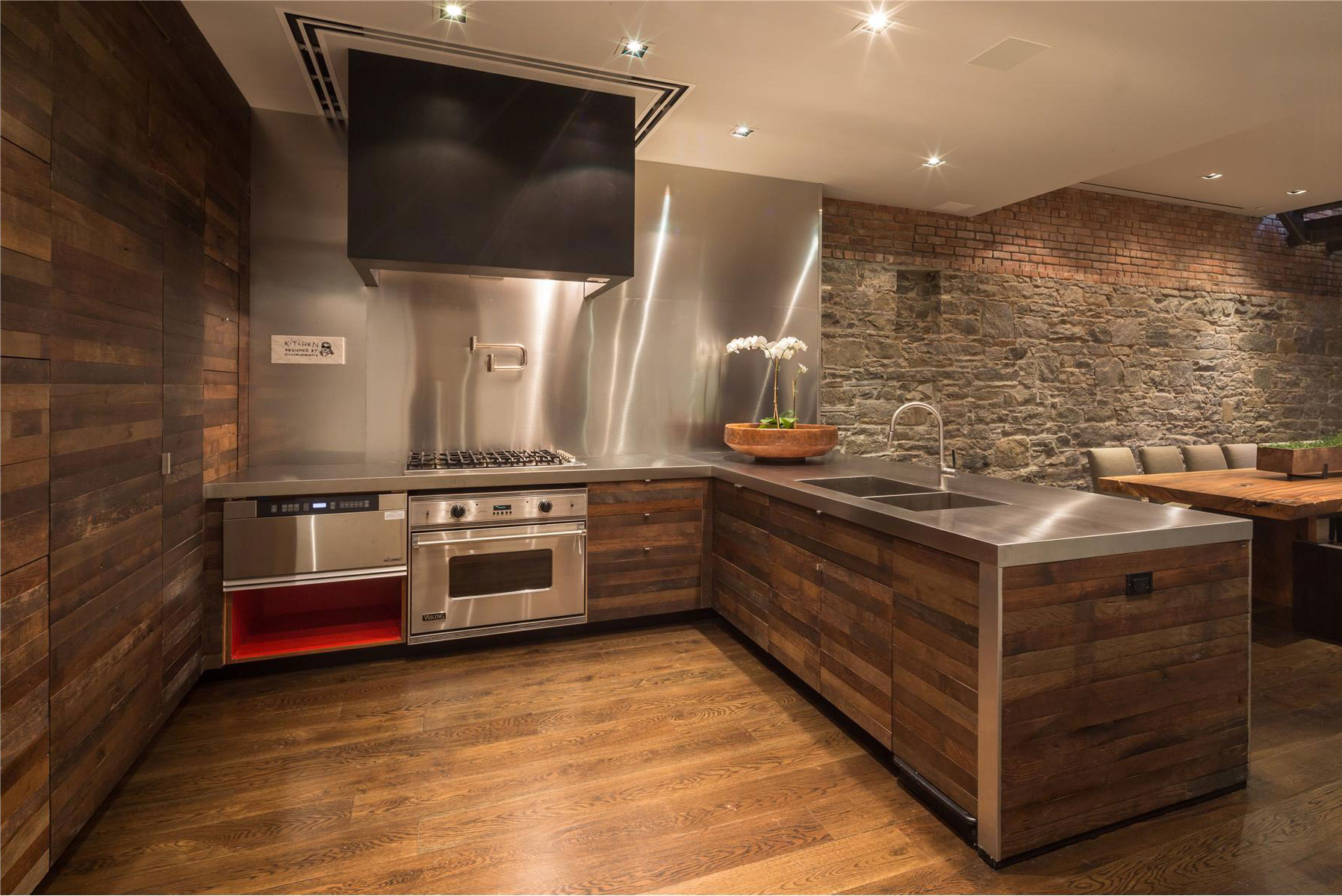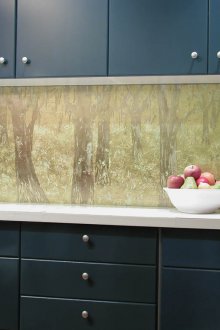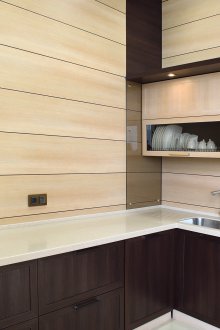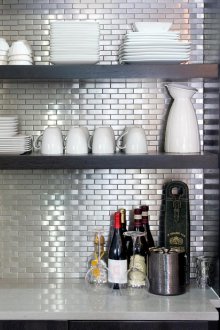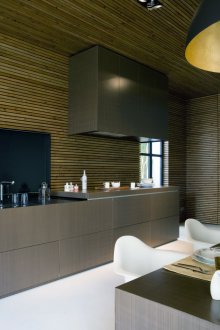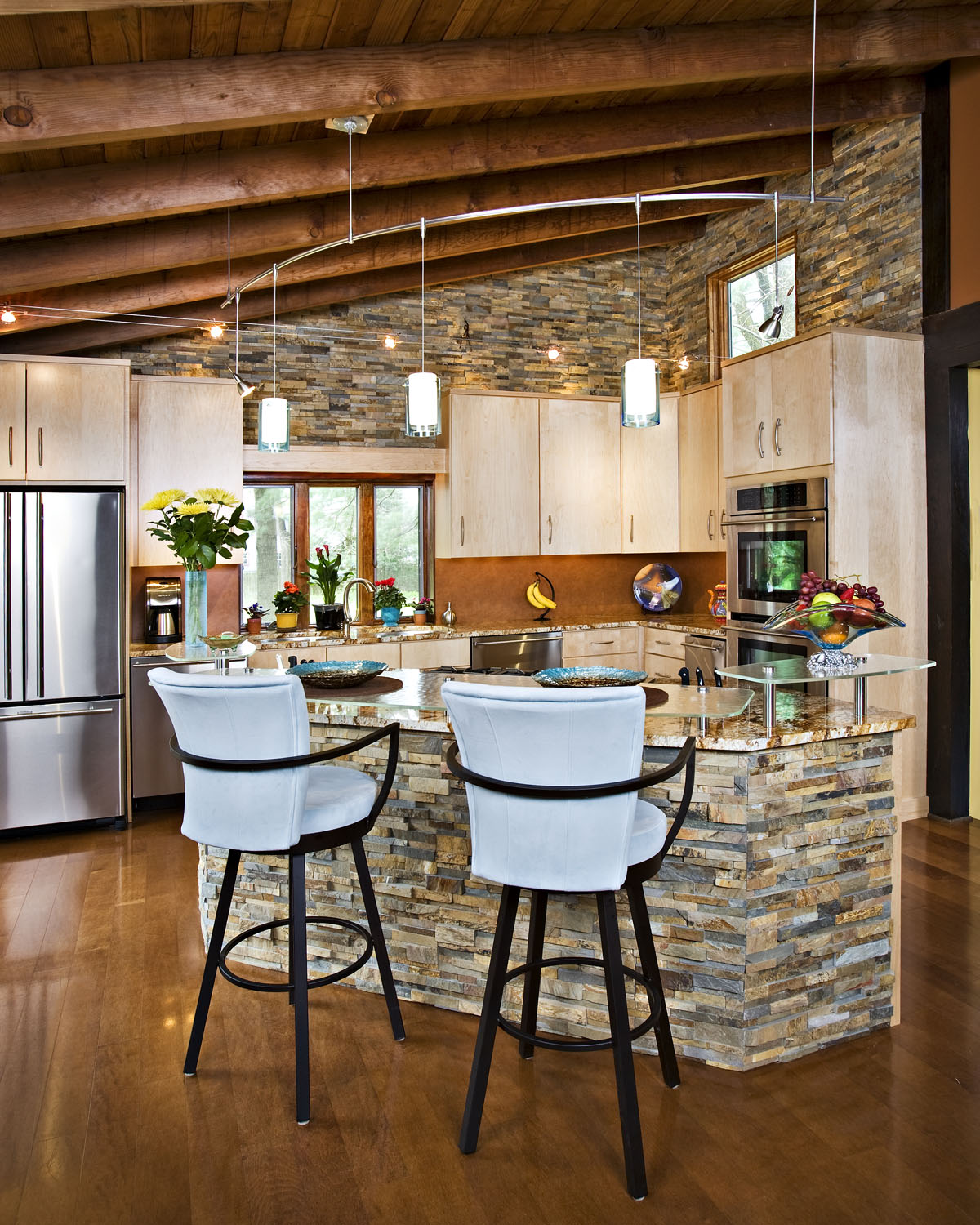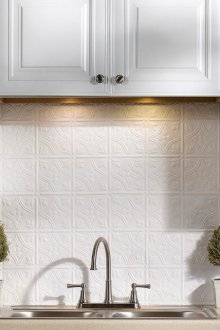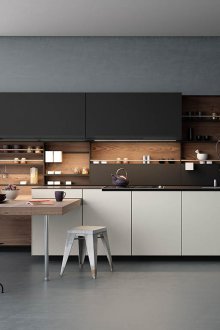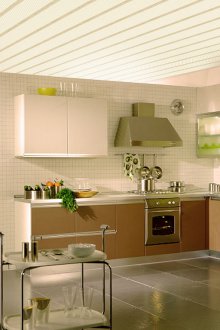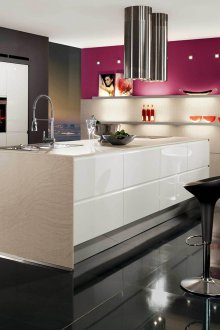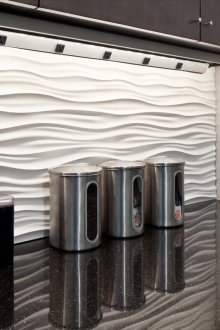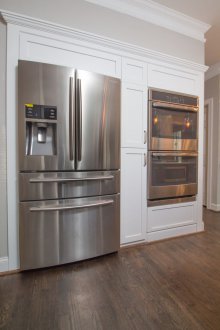Panels for the kitchen: types and advantages (23 photos)
Wall panels for the kitchen - a great way to finish a room that is constantly exposed to high humidity and high temperatures. In addition, interior panels allow you to customize the kitchen in any style. However, a wide range of types, colors and textures can be confusing for any person, so you need to know how to choose high-quality and durable wall panels for the kitchen that perfectly fit into the interior, regardless of its style.
Advantages and disadvantages
The original wall panels for the kitchen can be colored, with photo printing, with ornament, brick-like or imitation wood. Such material on the wall is widely used for decorating kitchens. However, when choosing it, it should be borne in mind that, depending on the type of material, it may have negative characteristics.
For example, MDF panels strongly absorb unpleasant odors and grease, and plastic kitchen panels quickly burn out under the influence of direct sunlight. Therefore, decorative panels for the kitchen, although they have drawbacks, but they are usually characteristic of a certain material.
It is worth considering what common advantages wall panels for the kitchen have. These include:
- Easy installation. Installation of the kitchen panel takes a minimum of time, and at the same time does not require special tools. Installation takes place in two ways. Sheets can be attached to the frame or using special glue. For this, special glue is used. This process is not accompanied by noise or dirt.
- Ease of care. Wall panels for the kitchen are most often made of large lengths and widths, so they do not have seams. It is in the seams that dirt, bacteria and mold most often settle. Therefore, such a material is easier to care than tile.
- Convenience in laying communications. Many people choose panels due to the fact that they simplify the laying of communications and allow you to completely hide sewer, plumbing and electrical wires.
- Soundproofing. Sheet panels allow you to make additional soundproofing of the room. For this, a layer of sound-absorbing material must be placed between the wall and the panel. This allows you to protect other rooms from noise from the kitchen.
The list of benefits may expand depending on the type of material. For example, if you use such panels for the kitchen as PVC, then they can be used for decoration of both walls and ceiling. And if you use glass, then they can be used only for the working wall, but it is extremely easy to care for them.
Types of panels for the kitchen
There are various types of wall panels for the kitchen, each of which is recommended for use in certain cases or depending on the interior of the room. Conventionally, they can be divided into wall and universal. The first type - finishing material only for walls, and the second - can be used for the ceiling.
The main types:
- Glass panels for the kitchen. The best option for creating an apron. Also, with the perfect choice of pattern and color, the glass also looks good on the ceiling. However, it is not practical to use glass to finish all the walls. It is better to combine glass panels for the kitchen with other decorative and finishing materials.Using this material, it is possible to obtain the perfect gloss, as well as a surface that is convenient for cleaning.
- MDF panels for the kitchen. Not the best option for use in the kitchen. It accumulates moisture and fat, and is also easily damaged. However, if such sheets are laminated, you can get rid of almost all the negative characteristics of the material. Such panels can be colored, brick-like, with a pattern or with photo printing. Separately, it should be noted acrylic panels for the kitchen, which have good characteristics and at the same time affordable cost.
- Plastic panels for walls. One of the most affordable wall finishes available. It is characterized by medium density, original design and ease of care. PVC panels for the kitchen can be of various thicknesses and densities. Thin white panels can be used for the ceiling, and colored sheets of maximum thickness for the walls. For decoration, matte or glossy panels are used, plain, with photo printing or brick-like.
- Particleboard panels. High-quality fiberboards with proper care can last quite a long time. Most often, they are laminated to protect the material from moisture and grease. With their help, the perfect gloss is created, which is easy to care for.
- Panels made of postforming and artificial stone are chipboard material coated with a polymer coating. This allows you to make a panel for brick, stone or other natural materials. For manufacturing, you can also use artificial stone, which although it is difficult to install, but it has a stylish design, durability, moisture resistance, as well as a beautiful appearance under a brick or natural stone.
- Tempered glass. One of the most popular apron design options, which in its characteristics is not inferior to ceramic tile. However, various ornaments and real paintings can be created on glass. For example, you can print a pattern under a brick or stone, color drawings for the design of kitchen furniture. They also simulate kitchen mosaics or ceramic tiles. Creating mosaic patterns with red-hot glass is much easier than using a real mosaic. In addition, dirt and mold are not collected between the joints.
Separately, you can highlight the panels for the kitchen under the tiles. They allow you to create an optimally flat surface for the installation of ceramic tiles. This simplifies and speeds up repair work if the walls are uneven.
It is worth noting the features of mounting wall panels. The frame method of installation takes more time, and is most often used if large area cladding or ceiling decoration is required. In this case, it is not necessary to pre-prepare the base. Glue technology at first glance looks simpler. However, before using it requires careful alignment of the base. In addition, this method is not required for ceiling paneling.
Panel Selection Rules
Panels for wall and ceiling decoration are sheets, the size and thickness of which depends on the type of material selected. The sheets that are used to make the apron have a length of 2 to 3.5 meters. The width of such sheets is 1-2 meters. Thickness depends on the type of material. However, sheets with a minimum thickness of 3 mm are recommended.
Such materials most often have a smooth surface, but it is possible to order matte or texture sheets. Color can be monophonic or with photo printing under white brick, stone or other materials. Drawings can be ordered any. The main thing is that they fit into the design of the kitchen.
When choosing a material, pay attention to where the panels will be installed. If there is a gas stove nearby, the material should have good heat resistance.
Wall panels can be used not only for an apron, but also for decorating the rest of the kitchen space.In this case, it is better to choose rack, type-setting or other panels made of plastic, MFD or PVC. The thickness of the panels, which are located at some distance from the sink and stove, may be lower. In addition, they may not have flame retardant and moisture resistant properties. For the working area, it is best to use sheet panels that make it possible to minimize the number of seams.
The installation of such panels on the frame avoids the need to align the walls, which always precedes the process of installing ceramic tiles. A wide selection of colors and patterns will allow you to choose the best solution depending on the design of the kitchen.


